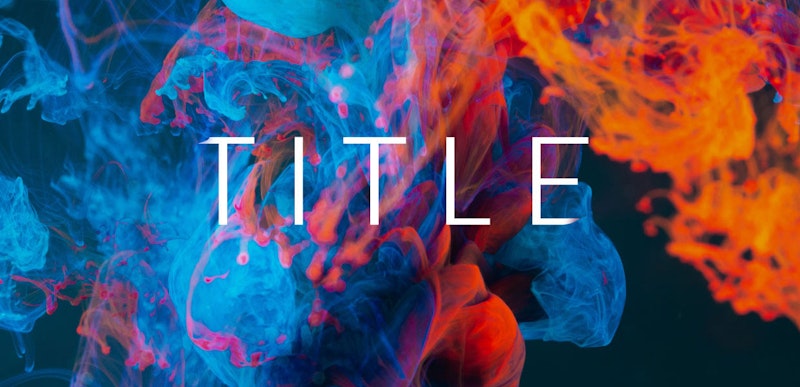How To Use DaVinci Resolve Title Templates
Introduction
Today, we’re showing you how to use our Davinci Resolve title templates! Here is a link to the Free Simple Titles.
How to use DaVinci Resolve title templates
In order to import your title templates, you’re going to want to restore them as a project.
To do this, you’re simply going to find your project manager. This is what appears at the beginning when you open up DaVinci Resolve. If you’re already within a project, just go to file, project manager.
From here, you can just right-click anywhere in the grey and select restore. This will pop up a window for you to choose the title templates from their location on your computer. So I’m going to find a free title template to use for this example. Once I’ve found them, you should see that there’s a variety of different versions of the same project, each in a different standardized framerate. We’ve done this so you can choose the right frame rate for your current project. This is because DaVinci Resolve has trouble switching timeline frame rates mid-project. So, let’s say that we have a project that uses a frame rate of 29.97, and we want to select the project with that frame rate listed in the title. Great!
So now, when we hit ok, we can see that it opens up as its own project in our manager. Double-click on it and open it up. From here, you should be taken to the project holding your title templates, and you can start working on it.
Please note that DaVinci Resolve templates work best when loaded in the way described here ( restored as its own new project) and when adding media to it. If you wish to work the other way around ( adding a template to an existing project), then you should probably look into our DaVinci Resolve Macros.
Working with templates in DaVinci Resolve is similar to using MOGRT files in Premiere Pro. The former gives you a stylish effect, and the latter allows you to change parameters quickly.
To access the items that you can change within these templates, highlight the template that you’re working with, and go up to the inspector window here, making sure that the fusion tab is selected. From here, you can make changes to different elements depending on the template in question, but for this one, we can change what the text says,
We can change its font, color, and a host of other things. But because this template has more elements at play, we have more parameters that we can change.
For this template, we can change the color of these light rays. However, we can also change a variety of other parameters that influence how the light rays look. With each new template, it would be beneficial to explore what each of these parameters does by adjusting them and seeing how they influence your resulting text effect.
Something you may find yourself doing with these text templates is using one and then copying it to add subtle variations while still retaining a cohesive feel to your project. We’re happy to say that when you copy and paste one of these template files within your timeline, you can make changes to the new version without impacting the original that it came from, meaning that finishing your video just got even faster!
Well, that concludes this tutorial. I hope you found it helpful. If you did, please give us a thumbs up. If you’d like to see more tutorials, please go ahead and subscribe because we’re making new ones all the time. We’ve got lots of other Premiere Pro tutorials, After Effects tutorials, filmmaking tutorials, and, yes, also tutorials for DaVinci Resolve.



























